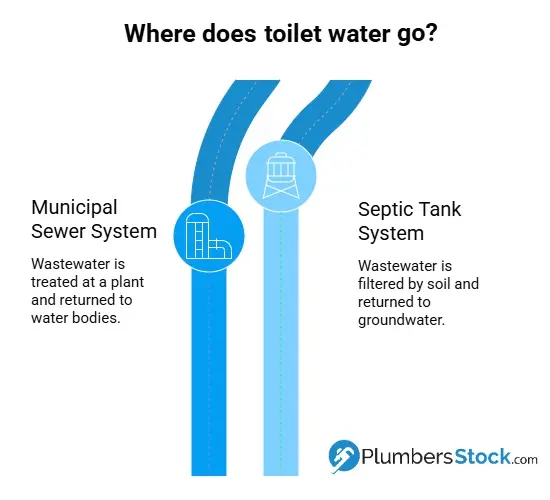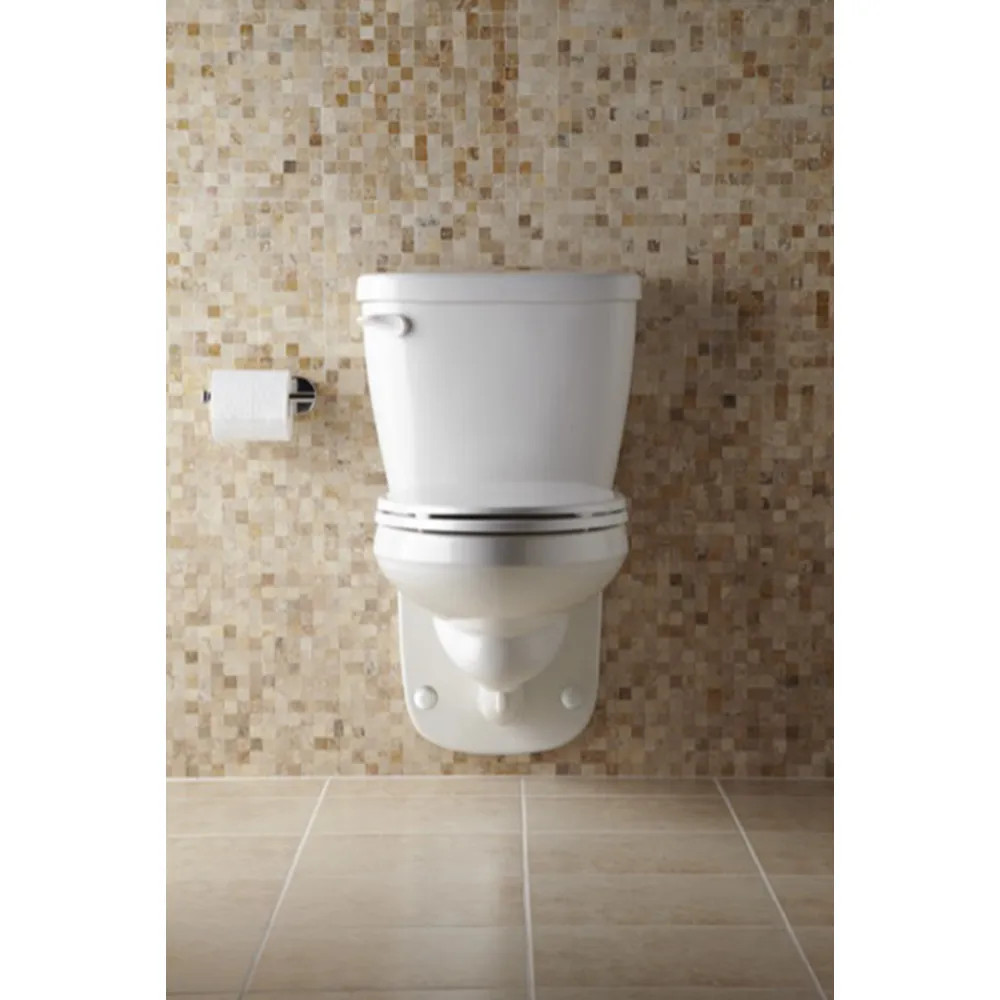When you flush your toilet, you probably don’t think twice about where that water ends up. But understanding where toilet water goes is not only fascinating—it’s also important for homeowners who want to be more informed about their plumbing systems and environmental impact. In this article, we’ll answer the question, Where does toilet water go?
What Happens When You Flush?
When you press the flush lever on your toilet, gravity and water pressure work together to move waste through the toilet bowl, into a drain pipe, and out of your home through a main sewer line or septic system.
Two Main Destinations: Sewer System vs. Septic Tank
Where your toilet water goes depends on whether you’re connected to a municipal sewer system or have an on-site septic tank.
1. Municipal Sewer System
 If you live in an urban or suburban area, chances are your home is connected to a public sewer system.
If you live in an urban or suburban area, chances are your home is connected to a public sewer system.
- Wastewater flows from your home through underground pipes.
- It joins sewage from neighboring homes and businesses.
- The combined wastewater travels to a wastewater treatment plant.
- At the plant, solids are separated, harmful bacteria are removed, and clean water is returned to rivers or lakes.
According to the EPA’s Wastewater Technology Fact Sheet: “Municipal treatment plants remove contaminants through physical settling tanks, biological processes using bacteria, and chemical disinfection before releasing treated effluent.”
2. Septic Tank System
In rural areas without centralized sewers, homes often rely on septic systems.
- Toilet water flows into an underground septic tank.
- Solids settle at the bottom (forming sludge), while oils float (forming scum).
- The liquid layer (effluent) exits into a drain field, where soil naturally filters it before returning it to the groundwater.
Regular maintenance, such as pumping every 3–5 years, is essential for septic systems to function properly.
How Your Toilet Connects to These Systems
Understanding how toilets tie into either system helps when troubleshooting plumbing issues or planning upgrades:
- The toilet flange connects the base of the toilet bowl securely to the drain pipe.
- A sealed connection ensures no leaks between the bowl and floor; this includes components like wax rings, bolts, and caps (shop wax rings & bolts).
- The waste then enters either a lateral pipe leading toward city sewers or directly into a private septic tank inlet.
If you’re upgrading parts of your bathroom, like installing new toilet bowls or toilet tanks, make sure everything aligns with local code requirements for drainage connections.
Why It Matters for Homeowners
 Knowing where your toilet water goes can help you:
Knowing where your toilet water goes can help you:
- Detect signs of drainage issues early: Slow flushing may indicate clogs or backups in pipes.
- Avoid improper disposal habits: Never flush wipes—even if labeled “flushable.”
- Simplify maintenance decisions: Understand when it’s time for pumping (septic) or inspections (sewer).
- Use appropriate products: Consider efficient options like one-piece toilets that reduce leaks.
FAQ: Common Questions About Toilet Water Disposal
- How do I know if my house uses a septic system?
- You may notice signs like no monthly sewer bill, visible access caps in your yard, a rural location without city services, or check property records/local utilities for confirmation.
- Can I use any type of toilet with my existing plumbing?
- Most standard toilets will work with both types of systems as long as they’re installed correctly. However, high-efficiency models may reduce strain on older septic systems. Browse our selection of two-piece toilets here.
- Is treated sewage safe when released back into nature?
- Yes—municipal plants must meet strict EPA standards before discharging treated effluent. The process removes most harmful substances through multiple filtration stages.
- What happens if my septic tank gets too full?
- An overfilled tank can cause backups in toilets or drains, and even lead to sewage surfacing in yards. Schedule regular pumping every few years, depending on usage levels.
Resources: Learn More About Where Toilet Water Goes
If you’re considering upgrades like adding a built-in bidet feature, check out our selection of built-in bidet toilets here.
About the Author
Cliff is a proud Dad and already a Grandpa, if you can believe it! He likes to lift weights, play basketball, hunt, and do just about anything outside. He has been in the construction and plumbing business off and on since 1989 and has tons of experience in many areas of home improvement.
